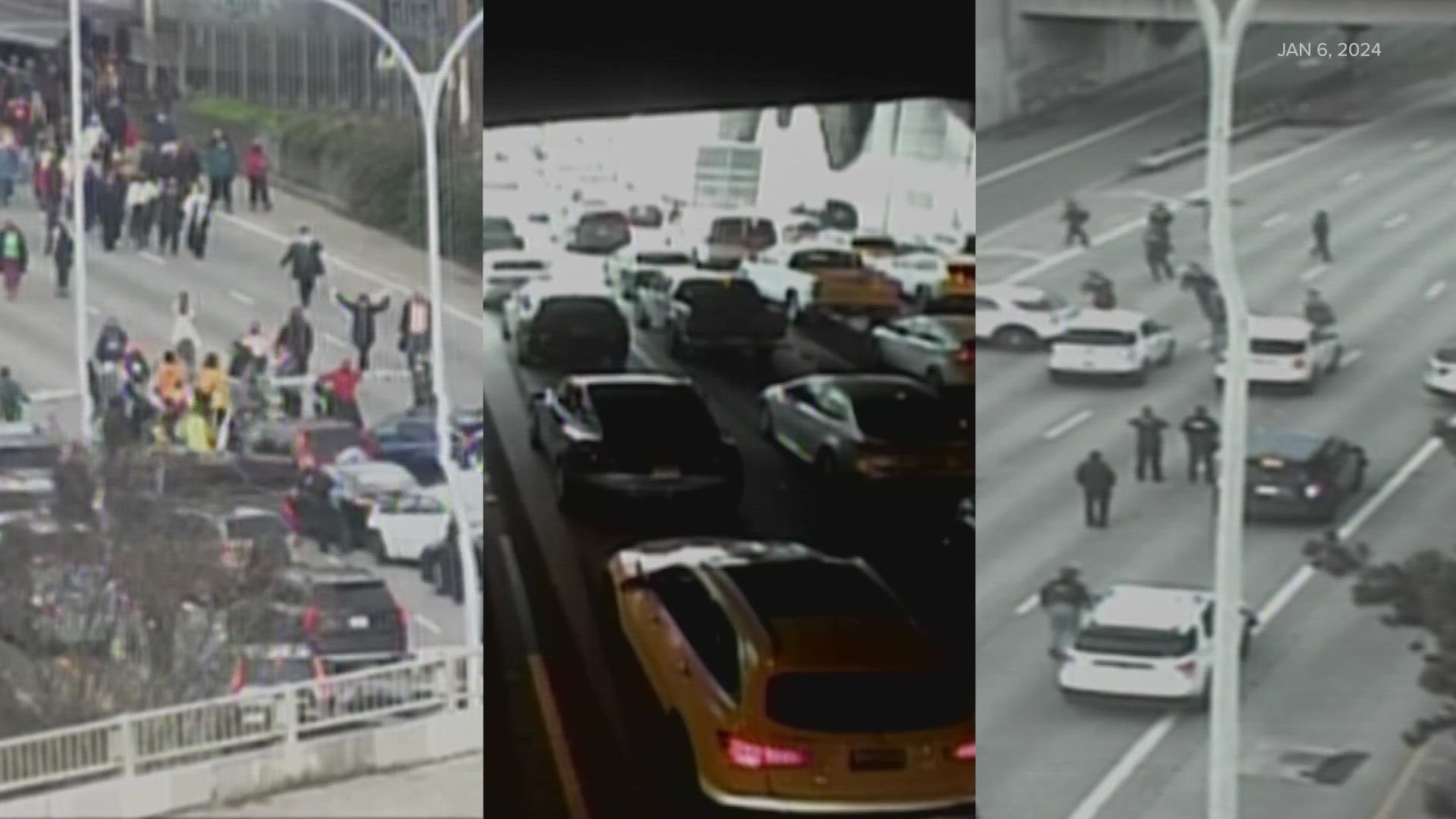SEATTLE — Washington State Patrol is continuing to investigate and gather evidence of the protest that blocked northbound Interstate 5 in Seattle and created gridlock in the city for hours on Jan. 6.
"Civil disobedience is an important feature of democracy, but it comes with accountability," said State Patrol Chief John Batiste in a prepared statement released Jan. 6. "The Washington State Patrol is actively investigating several individuals involved in orchestrating Saturday’s protest and will be referring cases to the King County Prosecutor’s Office as appropriate."
Batiste said there "should be no doubt" that the agency will investigate and pursue prosecution of the people "who cause this level of disruption."
As of Thursday, Jan. 11, no cases were referred to the King County Prosecuting Attorney's Office.
About a dozen vehicles "clearly well-orchestrated and choreographed" were used to bring traffic to a stop around 1:15 p.m., according to an after-action report from the State Patrol. Traffic wasn't fully flowing again until just after 6 p.m.
Among protesting and calling for a cease-fire in the Israel-Hamas war were a small group of around eight people who had chained themselves together with a device known as a "Sleeping Dragon." The device is used to hinder first responders as they require extra time to safely dislodge protesters who have bound themselves together.
State Patrol Communications Director Chris Loftis said while the agency recognizes the right to free expression and the right to assemble, what the protesters did on Jan. 6 was "illegal and unsafe." Loftis pointed out there are several medical facilities in the area where the protest was held, which could put people seeking treatment at risk.
Additionally, there have been instances where people get frustrated and act in a vigilante manner, putting the protesters themselves at risk, Loftis pointed out.
During the protest, state patrol was preparing to make arrests, especially those who had bound themselves together, Loftis said. However, there's a process that required additional resources, as well as an official order to disperse, before arrests could be made. Loftis said had the protest gone another five to 10 minutes, arrests would have been made.
Despite no arrests made on scene, Loftis said there's video evidence, as well as evidence from social media and physical evidence.
"And so we have a team of folks that's looking at that," he said, adding that if enough evidence is gathered for a "solid case," it will be sent to the prosecutor's office.
The most likely charge someone involved in the protest would face is disorderly conduct, according to Loftis.

